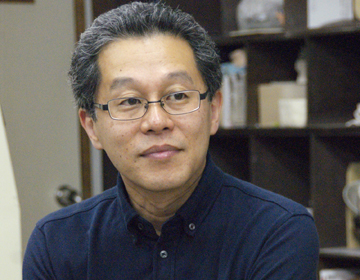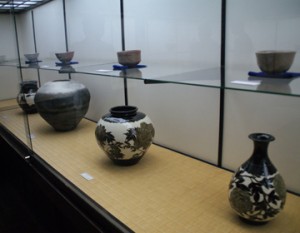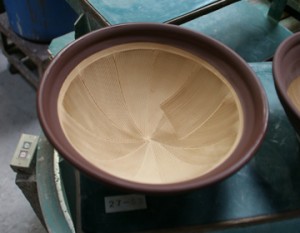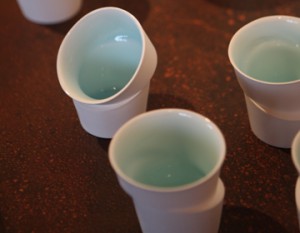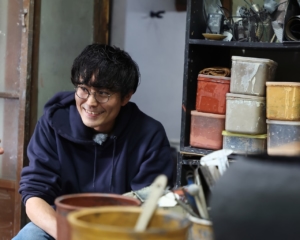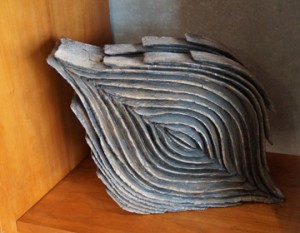Painting metal to create color

One of the characteristics of ceramic artist Koichi Koyama’s work is that he coats layers of metal to create a unique texture. He engraves the lines, and covers different areas with tape to add colors, one area at a time. With this technique, he is able to express shine, brilliant blues, and even pink.
He discovered pink pottery when he was working on the reformation of pieces by the Australian ceramic artist Lucy Lee in the late 20th Century. It is unusual to see the color pink in pottery. “Does pink exist in Japanese ceramics?” Nakata asked.
“Seldom, but it does exist. But this color is more Western. Ceramics originated in the East, but this color did not exist in the East. People who saw it for the first time were astonished.”
There is More to Discover
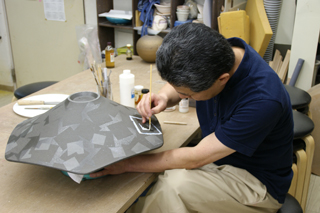
This color was made possible with scientific technology. Koyama’s work also has a lot do with science. What first got him thinking about this type of work was when he questioned the possibility of creating “gild plated ceramics”. It was a challenge. He tried using almost all of the elements on the 元素表 chart that he could access. It was then that he discovered that titanium can turn blue, and that bismuth can turn pink. The temperature inside the kiln can also alter the color.
Nakata observed intently and commented, “It is obviously a color rarely seen in ceramics.” The color was made possible by the power of science.
Koyama told us “There is so much more I want to know.” There are many things that were relayed to him from his master. However as an artist, understanding the reasoning behind the process may also be a part of adding depth to tradition.
Always Pursuing Something New
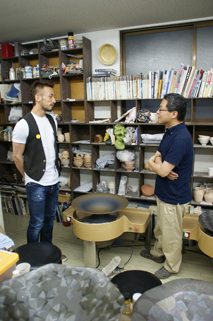
This pursuit of creating color out of metal started 15 years ago. “Until then, I was engrossed in my work teaching at a community school.” Koyama told us. His work is “traditional craft”. However, “I want to take in anything that is practical.” he said.
“I want to incorporate new things. There are colors and expressions that cannot be possible unless processed in a pure state. As an artist, I want to continue my challenge.”
And with challenge, we see the emergence of the new tradition. This is proven by history. Koyama’s challenge is not a challenge against tradition, but a transition within tradition. The tradition and culture we have today are probably a result of multiple challenges.
Ceramics has a history of several thousand years, and on hearing the words ”never-ending spirit of challenge”, we were reminded of this once again.



